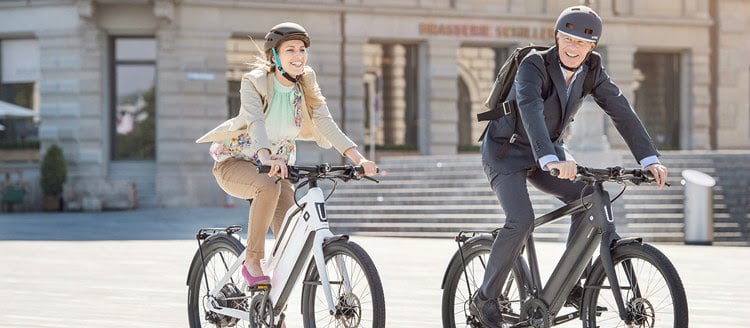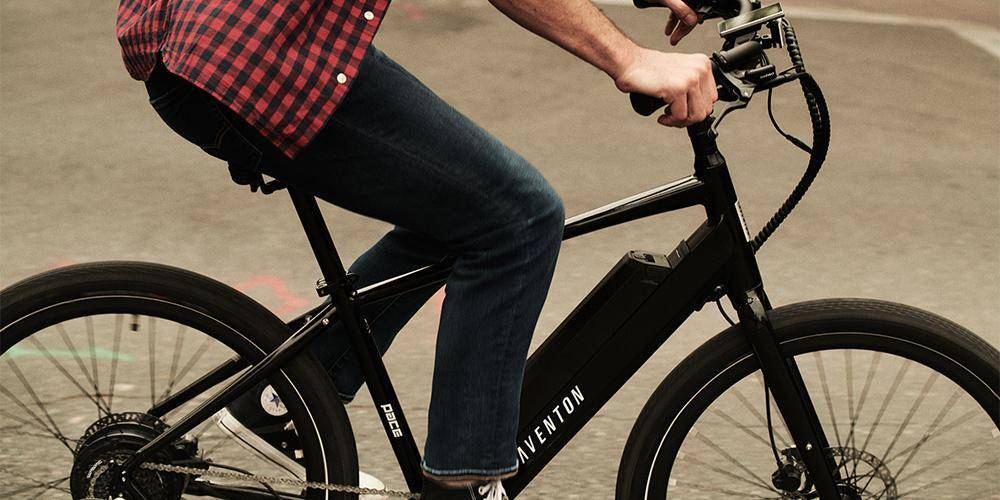Bicycles are a widespread way for many people to get to work and travel around with. They are cheaper than any vehicle and save you plenty of money on gas and other things you might purchase for your car. Electric bicycles are steadily getting more popular by the year. But a common question arises when it comes to electric bikes. How safe are they?
Electric bicycles are just as safe as regular bikes. They are the same shape and size and move at roughly the same speed. Provided you use the recommended safety equipment that you would with a regular bicycle.
As you continue to read this article, we will discuss the safety concerns you may have with electric bikes. Along with this, it will also explain the differences between traditional and electric bikes. Let us get to learning!

Are Electric Bicycles Safe?
Safety should always be a primary concern when it comes to any mode of transportation. When it comes to electric bikes, they are as safe as traditional bikes. As long as you obey the road rules and use the proper safety equipment like a helmet, there is no difference between the two when it comes to safety.
That being said, there are still concerns when it comes to these types of transport vehicles. Since electric bikes are relatively new, there are laws and classifications in the works to properly define electric bikes.
When it comes to these new classifications for e-bikes, there are mainly four classifications depending on which state you live in the United States. The first one is simple; few states classify them as Electric Bicycles and no other subclass classification.
However, the large majority of states have a 3 tier system to provide a more concise classification with their own set of laws to provide safety for you and others around you. While only a few states do not have their own set of regulations for electric bikes, lumping them in the same category as traditional bikes or even low-class mopeds.
Over twenty-five states have the 3 tier classification mentioned above. We will discuss these tiers below.
Class 1 Electric BicycleA bicycle that has a motor installed on it that provides riding assistance only while the rider is pedaling and then stops assisting the rider until the rider reaches or exceeds 20 miles per hour.Class 2 Electric BicycleA bicycle that has a motor installed on it that is exclusively used to propel the rider on the bicycle while providing no assistance when the bicycle reaches or exceeds 20 miles per hour.Class 3 Electric BicycleA bicycle that has a motor installed on it that provides riding assistance only while the rider is pedaling and then stops assisting the rider when the bike reaches or exceeds 28 miles per hour and also has a speedometer equipped.
Any bicycle that exists outside of these class tiers will be considered a low-speed electric bike and would be regulated as a traditional bicycle.
When it comes to protective headgear laws, the United States is split in half regarding rules and regulations for electric bikes.
Twenty-five states require you to have a helmet on by law when operating an electric bicycle. These laws do vary, but mainly they only vary depending on your age.
The other 25 states do not have any enacted laws requiring helmets when operating an electric bicycle when this article is being written.
However, 22 states require a helmet regardless of the bike you are riding if you are 18 years old or younger.
Electric Bicycle Safety Tips
There are a few things that you should consider when purchasing and using an electric bicycle. At the same time, they look and feel similar to traditional bikes they can handle entirely differently.
Electric bicycles can travel much further and faster than regular bikes while putting in the same effort overall. Below will be listed a few safety tips you should consider following when riding your electric bicycle, especially for new users.
1. Use A Helmet At All Times

Helmets are no joke and save lives daily from crashing or falling over on a traditional pedal-bound bicycle to accidents on motorcycles. Helmets are specifically made to keep you alive in case an unfortunate accident occurs.
While you may think you look silly using one, you will thank your helmet for saving your life once you survive something that might have been much, much worse.
2. Pay Even More Attention to Traffic Than Usual

Everybody on any form of the bicycle should be aware of their surroundings and pay attention to traffic. It is even more critical for people who are using electric bikes. Electric bicycles look very similar to standard bicycles but can travel up to 20 to 28 miles per hour.
Regular drivers might not expect a person on what looks to be an ordinary bicycle to be traveling that fast. Drivers usually are used to coasting safely past a cyclist or two while driving, but the speed at which electric bikes can travel can throw off drivers leading to dangerous accidents.
3. Keep Track Of How Fast You Are Going

As previously stated, electric bicycles can travel quite fast. New owners of these fast bikes might be tempted to go for the highest setting on their brand new bike to see how it feels and to test their bike’s limitations.
However, it is recommended that you start slow and work your way up to high speeds. Learn how the bike feels as you pick up the pace.
4. Learn How & When To Break

Staying on the topic of speed, because you can move a lot faster than you could on a standard bike, you will need to learn when the appropriate time to brake and slow down is. While braking on a traditional cycle can be quick and to the point, typically, you will not be traveling faster than 10 to 12 miles per hour.
As you start your traveling escapades on your new electric bike, learn to brake earlier than you would on an ordinary bicycle. Because these electric bikes can add 200+ watts to your pedaling force, your brake time is extended and can lead to unfortunate accidents if you do not learn when to brake.
5. Learn To Get On & Off Your Electric Bike

Learning how to get on and stay on a bicycle is the first thing you know when learning how to ride a bike. However, electric bicycles can weigh 20 pounds or more than a typical bicycle.
This added weight might make it slightly more difficult for unaware passengers riding for the first time. That being said, if you are not careful when mounting your electric bike, the added weight can throw you off, and the bike might fall over or fall on top of you, causing injury.
6. Electric Bicycles Are Still Bicycles

Most of these safety tips are all attributed to the extra speed the electric bike provides. Different rates or not accidents involving cyclists still happen. An electric bicycle inventor states that most accidents he has seen involving electric bikes would have occurred to traditional bikes in that same situation.
A survey taken in 2018 found that approximately 20% of electric bike riders were in an accident of any kind. Of that 20%, roughly 19% of those riders said the electric bicycle contributed to the accident in its way. These instances were from the added speed, not braking on time, the added weight of the bike, or some other form.
Remember, an electric bicycle is still, in fact, a bike. That means that when you are out riding around, keep and mind and employ the standard bike safety tips.
The Difference Between Electric & Traditional Bikes
There are a couple of differences when it comes to electric and traditional bikes. Mainly the electric part. Electric bicycles have an electric motor installed on the back of the bike that does one of 2 things, either propel the bike fully with no need for pedaling or offer pedal assist, which requires the rider to pedal constantly.
However, pedal-assisted electric bicycles typically do not provide the same amount of stress and exercise a traditional bike would. Imagine taking a walk, but you are traveling as if you are running. That is how pedal-assisted electric bikes feel.
The other main difference when it comes to electric and traditional bikes is the cost. Classic bikes can vary in price, but typically if you were to buy a reasonably good bicycle that you expect to last a long time under constant use, you would expect to pay upwards of 1000 dollars.
However, electric bikes cost much more. If you are looking to purchase an electric bicycle, you can expect to pay between 2000 and 3000 dollars for it.
Final Thoughts
Electric bikes are the new craze when it comes to cycling. With their rise in popularity, it is essential to know the differences between electric and traditional bikes.
Along with that, electric bikes come with their own unique safety tips while still employing all of the same safety tips as conventional bikes.
Hopefully, this article has answered any questions you may have had about the differences between the two and just how safe they are.


